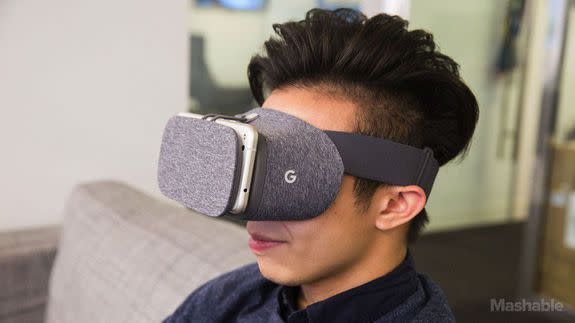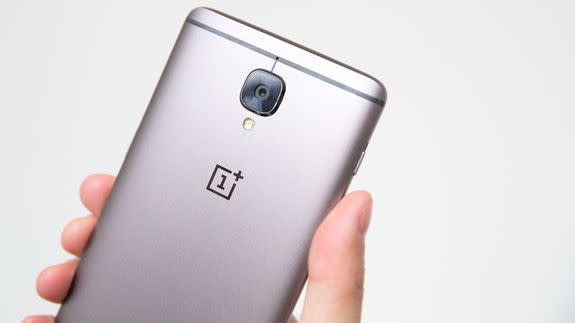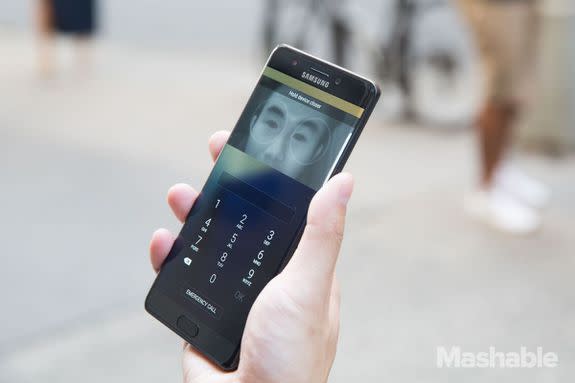7 tech innovations coming to your next smartphone

Boring or not, smartphones aren't going away anytime soon. Phones — specifically, Android phones — hit a new high in 2016, finally competing with the iPhone in many of the areas they usually fell short.
But they're about to get even better.
Like Intel's tight grip on the PC world, Qualcomm powers most of the world's best smartphones. To kick off CES 2017, the chipmaker detailed its newest processor, the Snapdragon 835, and outlined how it's going to push mobile tech forward in 2017.
SEE ALSO: Even faster charging tech will juice phones from 0 to 50% in 15 minutes
The new Snapdragon 835 systems-on-chips (SoCs) will be produced using a 10-nanometer process, downsizing from the 14-nanometer process used in pre-existing Qualcomm chips, thus fitting even more transistors — and more processing power — on a chip.
Along with a 27 percent performance increase, the 835 also consumes up to 25 percent less power than the previous-generation chip (820/821).
More power is always to be expected, but what kind of real improvements, beyond the usual (smoother Android experience with faster app loading) will we see?
Here are seven tech innovations the Snapdragon 835 brings that should make you excited about phones again.
1. Better mobile VR

Image: lili sams/mashable
Mobile continues to be the most accessible way for consumers to dive into VR. The success of Samsung's Gear VR and Google's push forward with its Daydream platform shows mobile VR is only going to become bigger.
But as good as mobile VR has gotten, it still has some serious shortcomings to provide a truly immersive virtual experience that rivals high-end VR headsets like the Oculus Rift and HTC Vive.
With up to 25 percent faster graphics rendering, the 835 chip will enhance sight and sound for mobile VR like never before. Faster refresh rates and lower latency will mean smoother and fewer nausea-inducing experiences. And the chip's increased performance opens the door to more powerful head-, eye- and gesture-tracking.
Not to mention, phones with the 835 chip will be "Daydream-ready" right out of the box.
2. Improved photos and videos

Image: lili sams/mashable
Android phones really stepped up their camera game with practically every major flagship smartphone capable of producing excellent photos in almost any lighting condition.
A couple of things the 835 chip will bring: faster autofocus and electronic image stabilization.
Electronic image stabilization 3.0 will provide "best in class video stabilization" that uses the gyroscope to compensate for pitch, yaw and roll, correct for rolling shutter, as well as reduce shakiness when zoomed in on a subject, according to Qualcomm. (If the Pixel and Pixel XL's electronic stabilization is anything to go by, horribly shaky video will be a thing of the past.) Plus, Qualcomm promises better encoding technology that could reduce file sizes by up to 30 percent. Smaller 4K video file sizes for people who have less storage? Hell yes, please!
3. Dual cameras on every phone

Image: stan schroeder/mashable
We got our first taste of phones with dual cameras in 2016 (iPhone 7 Plus, LG G5, Huawei P9). With the 835 chip, dual-camera support will be baked right in so any device maker can easily incorporate two camera lenses.
Phone makers will be able to choose how to use the dual-camera setup. It could be like on the Huawei P9 — one camera takes a color photo and the other camera takes a black and white photo and then the processor and software fuses the two into a single high-res photo. Or they'll be able to choose a system closer to the iPhone 7 Plus' where one camera is a wide-angle lens and the other is a "telephoto" lens for sharper optical zoom.
Up until now, a single back camera has been the norm. But moving forward, two cameras will be standard.
4. Longer battery life

Image: raymond wong/mashable
We all want more battery life, and Qualcomm's giving it to us from the chip level. The 835 promises up to 2.5 more hours of battery life as a result of shrinking the physical chip to consume less power — a 50 percent power reduction from the Snapdragon 801 from 2014. The chip maker's estimated improvements for various activities include over a day of talk time, over five days of music playback, over 11 hours of 4K video playback, over seven hours of 4K streaming video, over three hours of continuous 4K video recording, and over two hours of continuous mobile VR gaming.
Furthermore, phones equipped with the new chip will support Quick Charge 4, the latest in fast-charging technology. With Quick Charge 4, users can get up to 5 hours of battery life with five minutes of charging.
5. Greater security

Image: brittany herbert/mashable
Fingerprint sensors have proven to be indispensable for locking down our phones, but they can still get more secure. Qualcomm wants to take security to the next level with the 835 by using several biometric sensors to protect your data.
In tandem with a fingerprint sensor, an iris scanner and voice print could be used as a form of secondary authentication. You could think of it like the two-factor authentication that's available for online services... but with biometric sensors on your phone.
In light of a recent report where a child was able to use his sleeping mother's fingerprint to buy $250 worth of Pokémon toys via the Amazon app, we think doubling or tripling the biometric security is a good thing.
6. Even faster connections

Image: WALTER GEIERSPERGER/CORBIS
Did you think the addition of 802.11ac Wi-Fi and up to 600 Mbps (theoretical) on LTE was wild? Well, do we have news for you speed freaks.
The 835 comes with an integrated X16 Gigabit-class LTE modem. Read that again: Gigabit wireless connections. Though only a few gigabit LTE networks will go live in 2017, the 835 paves the way towards 5G networks.
One day we'll all look back and laugh at the term "buffering."
7. HDR ... on your phone

Image: youtube
If you've gone shopping for a new TV, you've probably heard the term "HDR" get tossed around a lot. HDR, short for High Dynamic Range, is a new video format that displays HDR-supported content, with a wider color gamut.
Unlike 4K, which is only appreciable when you move to a larger display, you can see the benefits of HDR immediately with content displaying greater dynamic range, brighter highlights and richer blacks.
Of course, because HDR is a format reliant on both hardware and software, phone makers will need to opt for HDR-ready displays to show off that wider color gamut.

 Yahoo News
Yahoo News 